Research Into the Pro-Terrorism Groups Behind the U.S. College Campus Protests Offers Alarming Findings
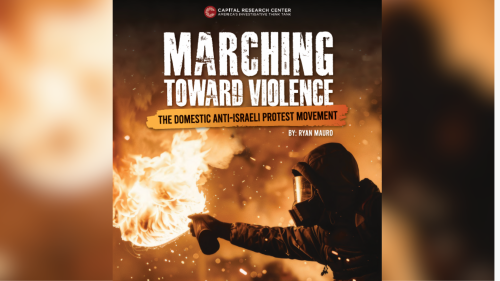
In the wake of the October 7, 2023 attack on Israel, American college campuses have become epicenters of intense debate and protests over the Israel-Hamas conflict. A new report from the Capital Research Center (CRC), "Marching Toward Violence: The Domestic Anti-Israeli Protest Movement," authored by CLARITy Coalition member Ryan Mauro and published on Oct. 9th, 2024, finds that these demonstrations are not merely spontaneous expressions of political dissent, but rather part of a coordinated network involving over 150 groups that can be characterized as “pro-terrorism” and aligned with extremist movements.
The 152-page report documents a disturbing progression: from conventional political activism to increasingly militant actions, with some factions meeting legal definitions of domestic terrorism. As these protests continue to dominate headlines and intensify tensions on campuses, understanding their organizational structure, ideological alliances, and broader societal implications is essential for media, policymakers, university administrators, and the public. In an effort to amplify the impact of this report, we invited Ryan to delve into his research and highlight its most surprising revelations.
We hosted a webinar with Ryan and Dr. Zuhdi Jasser discussing the groundbreaking report following the release of this blog. Watch the full discussion here.
AHA: How do you define "pro-terrorism," and how does it differ from merely supporting a political stance like opposing various Israeli policies or advocating for Palestinian rights?
Mauro: The CRC study I authored, Marching Toward Violence: The Domestic Anti-Israeli Protest Movement, used a definition of “pro-terrorism” with the highest threshold. Groups were included in the list of over 150 pro-terrorism groups only if they directly engaged in terrorism or endorsed, contributed to, or had substantive links to officially designated foreign terrorist organizations like Hamas or state sponsors of terrorism like the Iranian government.
Almost all the groups included on the list have undeniably expressed support for Hamas and the October 7, 2023, terrorist attacks. Broader stances on the Israeli-Palestinian and Israeli-Arab conflicts, as well as U.S. foreign policy, were not considered in determining whether a group qualifies as “pro-terrorism.” Even advocating for the elimination of Israel or the U.S. as nations or expressing antisemitism did not meet the threshold for inclusion.
We applied the most literal and narrowest definition of “pro-terrorism” to ensure our conclusions would stand up to scrutiny from the most skeptical readers. By taking this approach, we created an opportunity to build consensus about the nature of the anti-Israel extremist movement and the threat it poses.
I would go so far as to say that the data and conclusions of the study are so indisputable and alarming that even fair-minded readers who generally favor the anti-Israel side but oppose terrorism will be convinced.
”Unfamiliar audiences will see organizational names with terms like ‘human rights,’ ‘ceasefire,’ ‘peace,’ and ‘justice,’ and assume their content comes from credible civil rights activists or moral sources of information.”
AHA: The report identifies three main factions within the movement: Islamists, communists/Marxists/anarchists, and to a lesser extent white supremacist groups. Based on my reading of your report it seems to me that the Marxist-Leninist types are in fact the most practically and ideologically influential in the U.S., who then provide rhetorical support and justification for the Islamists. How did these factions come to work together despite having vastly different ideologies?
Mauro: The Islamists, such as those organizationally, historically, or ideologically connected to the Muslim Brotherhood (a transnational Sunni Islamist organization founded in Egypt that seeks to establish Islamic governance globally) and Jammat-e-Islami (a South Asian Islamist group advocating for the creation of an Islamic state governed by Sharia law), made a strategic decision to let their non-Islamist political allies take the lead after the October 7 attacks.
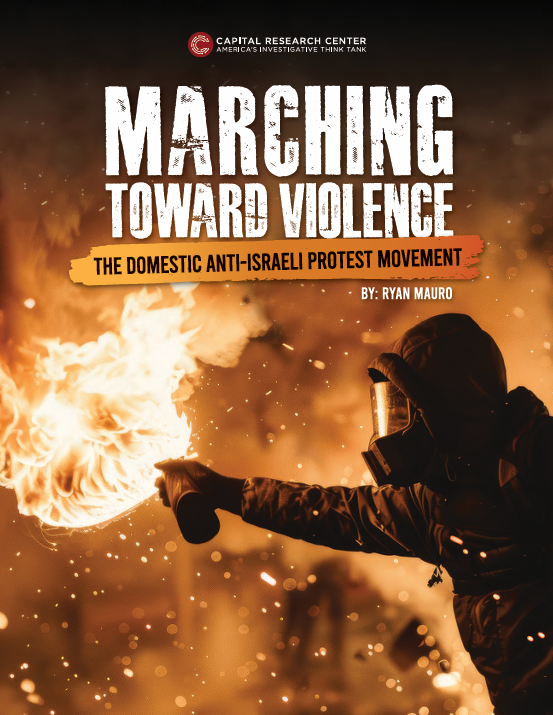
Cover photo of Ryan Mauro’s report “Marching Toward Violence The Domestic Anti-Israeli Protest Movement.”
In fact, as I documented in the report, the Muslim American Society, which federal prosecutors have stated in court was founded as the “overt” arm of the Muslim Brotherhood in the U.S., instructed its affiliated leaders to refrain from mentioning Hamas when publicly preaching and praying for the anti-Israel cause.
By having their non-Islamist allies take the forefront, they broadened the appeal of the anti-Israel offensive by preventing the impression that it is a purely religious, ethnic, or national movement. The organizations whose logos appear on posts advertising the protests and social media memes are mostly non-Islamist. Unfamiliar audiences will see organizational names with terms like “human rights,” “ceasefire,” “peace,” and “justice,” and assume their content comes from credible civil rights activists or moral sources of information.
The cross-pollination of these extremist factions has a long history. It is partly intentional, with different activists and organizations deliberately collaborating on shared issues and common enemies, and partly organic, arising from overlapping online ecosystems.
For example, there are Middle East-oriented chats on Telegram aimed at audiences of one faction, but it’s common to find adherents of one or two other factions active in them. They often appreciate the content and enjoy engaging with others interested in the topic, even if there are some differences in opinion.
“A strategy of sedition matches these seditious goals: Attacking their enemies through their domestic seditious movements and groups and sedition-fueling sentiments and behaviors within their enemies’ civil societies, like anti-Westernism, hate, tribalism, disinformation, apathy…and generic feelings of desperation and disempowerment.”
It is very common for an Islamist group to post content in its chat, which is then forwarded to other Islamist chats as well as chats of non-Islamist factions, and vice versa. Content even spreads between Antifa chats and white nationalist or “far-right” chats, often while both sides are simultaneously discussing physically clashing with each other.
There is also a symbiosis where a faction’s morale, radicalization, and recruitment increase whenever an opposing faction succeeds. This occurs because both sides favor instability, follow ideologies that foresee and encourage violent nationwide upheaval as a core tenet, and crave opportunities to demonstrate their importance. I’ve dubbed this phenomenon the "War of the Extremes."
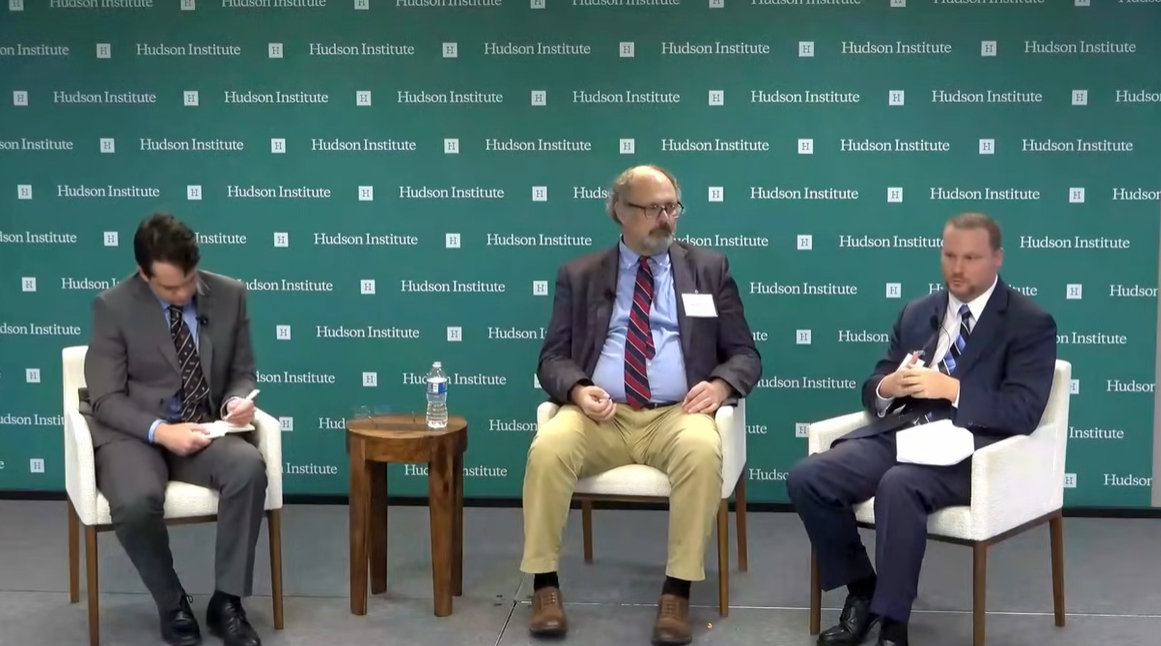
Sam Westrop (left), Director of Islamist Watch at the Middle East Forum, leads a discussion with Jeff Breinholt (center) and Ryan Mauro (right) on tracking and stopping the funding of Islamist activities at the CLARITy Coalition’s 2024 Conference “Defending the West.”
The term “alliance,” when referring to these factions’ relationships, is somewhat misleading because it implies collaboration between distinct entities. Instead, they are all part of the same foundational ecosystem, sharing many core beliefs about the world and the necessity of anti-Western revolution, insurgency, discord, and separatism. The massive overlap and the "War of the Extremes" symbiosis are why I refer to these factions as a single threat: The Seditionist Movement.
More broadly, the Seditionist Movement is essentially the U.S. wing of a global anti-Western governmental and non-governmental coalition that I have chosen to name the Axis of Sedition. The Axis of Sedition consists of the anti-Western governments with the seditious goal of destabilizing, overthrowing and remaking the Western-led international order.
A strategy of sedition matches these seditious goals: Attacking their enemies through their domestic seditious movements and groups and sedition-fueling sentiments and behaviors within their enemies’ civil societies, like anti-Westernism, hate, tribalism, disinformation, apathy, the Dunning-Kruger Effect, and generic feelings of desperation and disempowerment.
The Axis is led by the governments of Iran, China, Russia, Turkey, and Qatar and their government allies like Syria, North Korea, Venezuela, Cuba, and various other countries with anti-Western regimes.
Nongovernmental members based outside the U.S. are also included, such as the legions of pro-Axis NGOs, terrorist groups, and proxies like Hamas, the Muslim Brotherhood, Hezbollah, the Russian-backed militias in Ukraine, and Marxist, communist, anarchist, and other pro-Axis political groups.
"Students for Justice in Palestine’s declaration that it is Hamas—not merely in support of Hamas, but literally a part of Hamas that operates under its direction and control—means we have a designated Foreign Terrorist Organization operating chapters on college and university campuses across the country."
AHA: In the report, you describe how the protests and rhetoric have evolved from peaceful demonstrations on the mainstream outskirts of the movement to more violent and militant actions by its core leaders. How do mainstream organizations help sanitize or downplay the extremist intentions of those leading the movement, and are they fully aware of the radical elements within the protest groups they support?
Mauro: The protests had militant and criminal elements from the beginning, as one would logically expect, considering that demonstrations celebrating the October 7 atrocities and protesting Israel and its purported genocide were announced and organized even before the October 7 attacks were over.
The Marching Toward Violence study determined that the anti-Israel extremist protest movement can be mapped out as four overlapping concentric circles of escalating support for terrorism and militancy, with the outermost circle having the broadest appeal and least risk tolerance, and the innermost circle being the most militant and least concerned with popularity.
The most mainstream organizations you’re referring to are in the two outermost circles (for example: Democratic Socialists of America [DSA], Council on American Islamic Relations [CAIR], and the ANSWER [Act Now to Stop War and End Racism] Coalition). The strategy of these groups is to focus on coalition-building. Rather than rallying together as many groups as possible with mission statements related to the issue, as is typically done with advocacy coalition-building, these groups are rallying together as many different issues as possible, as if they are various planks of a political party’s base.
These groups bend over backward to justify the integration of every conceivable social justice cause into an unofficial grand anti-Western coalition platform with the anti-Israel cause as its focal point. Within the coalition are pro-terrorism, and anti-Israel extremist groups whose mission statements are related to LGBT rights, combating homelessness, criminal justice reform, abortion rights, climate justice, and so on. Terms used by anti-Western foreign policy groups, such as “settler-colonialism,” “anti-Zionism,” and “intifada,” are now commonly used by groups that were never previously involved in Middle Eastern or terrorism issues.
"The report explains that groups engaging in criminal protest activities do not qualify for tax-exempt status. They should be stripped of such privileges so that their main funding stream is severed. No legislation is required, and this isn’t hard to do."
To answer your question, these mainstream groups build the overall movement’s legitimacy through political coalition-building; broadly endorsing protests while declining to condemn or counter the protests’ criminal elements; influencing the news media; saturating social media; utilizing their political access and power; depicting resistance by schools or law enforcement as egregious civil rights violations; and waging war on the reputations of political opponents.
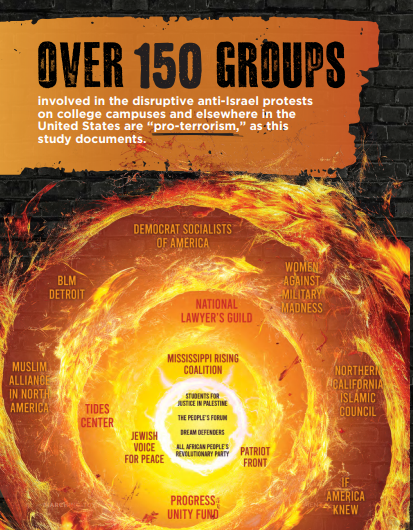
Page four of the report “Marching Toward Violence The Domestic Anti-Israeli Protest Movement.”
Some of these groups go further by condoning criminal protest activities, providing aid such as legal support to individuals arrested or disciplined by schools, promoting protests with explicitly criminal intentions, and discreetly directing their supporters to militant websites that offer guides for violent, destructive, and illegal actions.
AHA: You describe the movement as increasingly militant and criminal, with some elements aiming for a revolutionary campaign. What signs are there that this protest movement might escalate into a domestic terrorism threat?
Mauro: I’d argue that it already constitutes a domestic terrorism threat. The elements of the anti-Israel protest movement engaging in violence, property destruction, economic sabotage, and physical intimidation fit every legal definition of terrorism.
Students for Justice in Palestine’s declaration that it is Hamas—not merely in support of Hamas, but literally a part of Hamas that operates under its direction and control—means we have a designated Foreign Terrorist Organization operating chapters on college and university campuses across the country.
The movement’s trends, along with broader trends in the U.S., indicate that the domestic terrorism threat is rising. If left unchecked, the Seditionist Movement could escalate into an insurgency or dueling insurgencies, with consistent, smaller, guerilla-style attacks and violent clashes, such as riots, becoming commonplace.
At that point, the door opens to all sorts of disastrous scenarios: instability and civil strife dramatically altering life in the U.S., international conflicts swinging in favor of the Axis of Sedition, and the global standing of the U.S. being jeopardized. Based on my 22-year professional career studying and working in the counter-extremism and national security field, I consider this to be a very realistic and plausible scenario.
"I expected to predictably find that extremist groups were pulling strings, but I assumed most groups would not be on the same page and that many would likely be unaware of the other groups’ extremism. I was shocked at how the anti-Israel protest movement is almost wholly dominated by pro-terrorism groups."
AHA: The report suggests 10 measures to counter this movement like stripping nonprofit status from criminal organizations, charging offenders under federal racketeering or sedition statutes, deporting foreign activists, and filing class action lawsuits. Which of these actions do you think is most urgent, and how can citizens, lawmakers, and activists work together to reduce the influence of extremist elements in the protest movement while preserving freedom of expression?
Mauro: The irony of the situation we are in is that the threat is so severe, and the trends are so negative, yet there is massive potential to relatively easily and quickly reverse those trends and defeat the pro-terrorism Seditionist Movement domestically and the Axis of Sedition globally at minimal cost.
The 10 recommendations in the report are straightforward to implement, and a second Trump Administration seems very likely to be receptive to all the policy-related ideas. The mainstream leadership of the Democratic Party faces an existential threat from a pro-terrorism, anti-Israel extremist constituency and is likely to support most of the recommendations if approached in a suitable way.
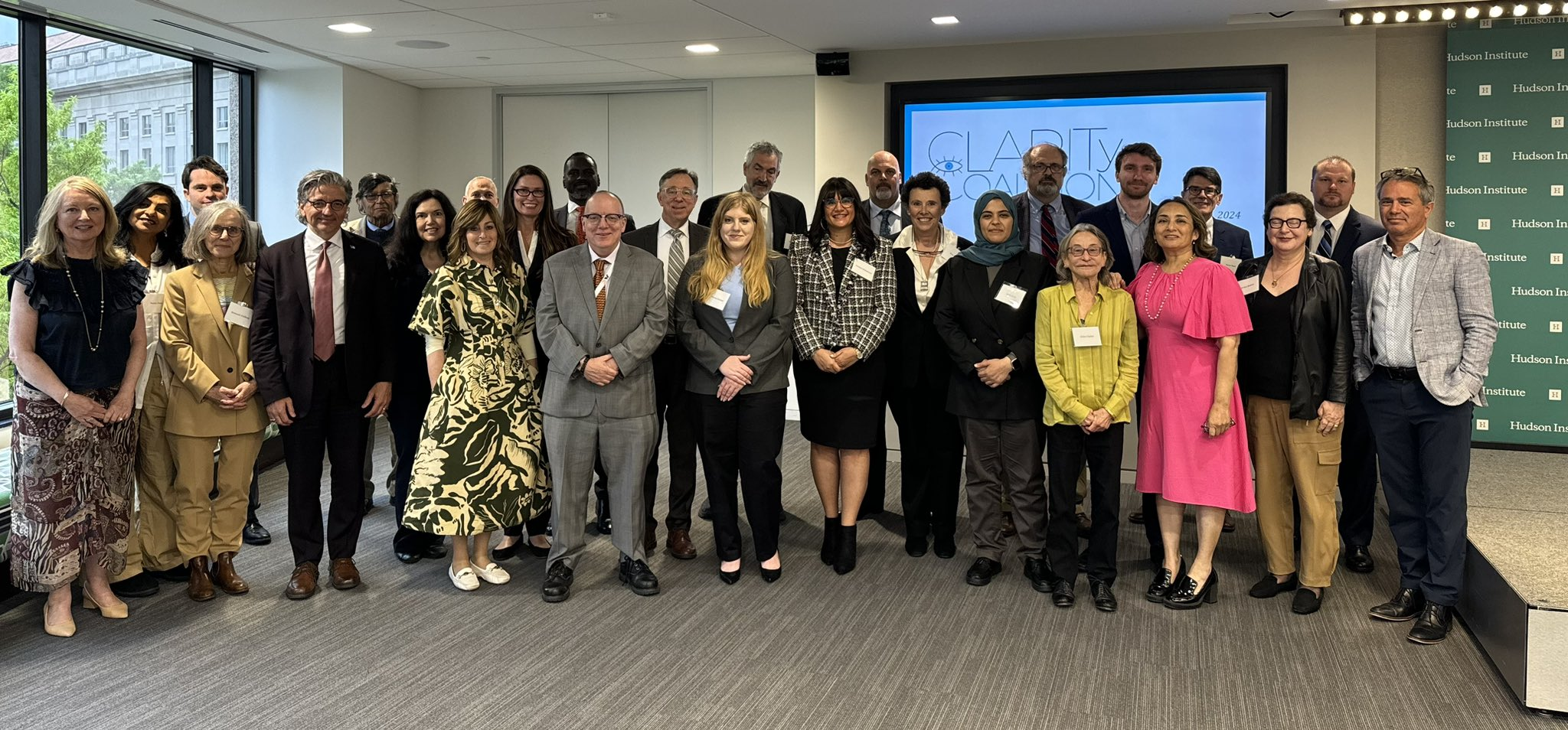
Group photo of participants at the 2024 CLARITy Coalition Conference in Washington, D.C. including Ryan Mauro (far right, back row.)
Most Democratic political operatives understand that appeasing these extremists would cause Democrats to lose far more voters and donors than they could ever gain. This leaves those Democrats with only one viable option for handling the extremists and their movement: defeating them.
At the federal level, I’d say the most urgent and feasible option is to inform, assist, and pressure the IRS to take a brilliantly creative step: enforcing its own code when it is violated by terrorism supporters, violent criminals, and anti-American Jew-haters.
The report explains that groups engaging in criminal protest activities do not qualify for tax-exempt status. They should be stripped of such privileges so that their main funding stream is severed. No legislation is required, and this isn’t hard to do. It can and should start happening quickly. I and other experts would love nothing more than to donate our time to supplying the relevant authorities with the proof they need to take action.
Citizens also have many effective options, from approaching school officials (many schools are suspending or even banning pro-terrorism student group chapters like Students for Justice in Palestine) to educating reporters when they encounter articles mentioning groups or activists without addressing their extremism. Even scrolling through their phones to identify someone who might be in a position to help—or benefit from reading Marching Toward Violence: The Domestic Anti-Israeli Protest Movement—can make a difference.
If readers need help or see an opportunity for us to assist in making positive change happen, they can contact me at RMauro at capitalresearch dot org.
“I was also surprised by the dereliction of the mainstream media…I read almost every single mainstream news article about the protests, and I can remember fewer than a dozen that mentioned a group or activist while informing the audience of the very relevant fact that they support Hamas, destroying Israel, or similar agendas. That’s why reporter outreach is one of my recommendations.”
AHA: What finding surprised you the most?
Mauro: The most surprising finding was the overall proportion of groups and activists involved in the anti-Israel protests that are pro-terrorism, hateful, and radical.
The over 150 groups I named were almost all the significant players, and many more were not included due to time constraints. Furthermore, many others did not meet the very narrow definition of pro-terrorism but were still ferociously anti-American, and antisemitic, and sought Israel’s complete destruction as a country.
I expected to predictably find that extremist groups were pulling strings, but I assumed most groups would not be on the same page and that many would likely be unaware of the other groups’ extremism. I was shocked at how the anti-Israel protest movement is almost wholly dominated by pro-terrorism groups. Only a handful stated they support a permanent two-state solution and oppose the genocidal agenda of destroying Israel. Of that handful, only a few fully opposed terrorism and the violent targeting of Israelis, both civilian and military, and therefore did not fit within our definition of pro-terrorism.
I was also surprised by the dereliction of the mainstream media, considering these protests were such a major headline for so long. I read almost every single mainstream news article about the protests, and I can remember fewer than a dozen that mentioned a group or activist while informing the audience of the very relevant fact that they support Hamas, destroying Israel, or similar agendas. That’s why reporter outreach is one of my recommendations. Reporters are overworked and underpaid, producing content under tight deadlines, which often leaves little time to research the organizers of a protest in depth.
Finally, I made an intense effort to understand the extremist students beyond just observing their Israel-related statements because people’s political beliefs and behavior are the product of many non-political life experiences and variables.
I hope to write soon about all my conclusions regarding what attracts students to these protests and extremist ideologies, but I was surprised to see how the vast majority of younger Millennials and members of Gen-Z are massively empathetic, open about personal struggles and weaknesses, and have self-esteem that is heavily dependent on constantly making a positive difference. These admirable qualities and habits exist in far greater quantity than what I experienced in my age group of older Millennials. These positive traits—as well as the unmentioned negative ones—are key to understanding what is happening on our campuses and, increasingly, in our high schools and even middle schools.
AHA: Thank you, Ryan, for taking the time to share your invaluable insights from your report. We deeply appreciate your tireless efforts to bring these critical truths to light!

